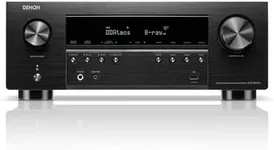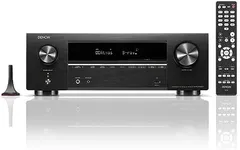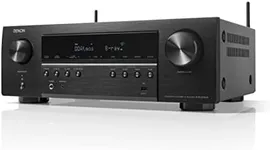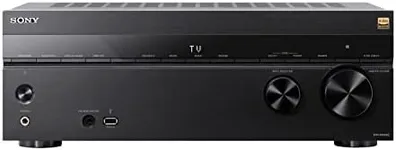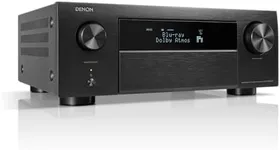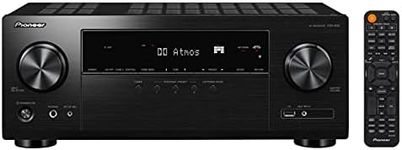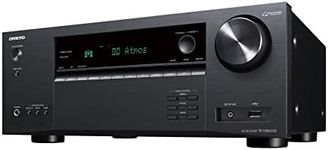Buying Guide for the Best 7 1 Receivers
Choosing a 7.1 receiver is an exciting step if you want to build a home theater system with immersive surround sound. A 7.1 receiver acts as the central hub for your audio and video equipment, distributing sound to seven speakers and one subwoofer for a rich, cinematic experience. To find the best fit, it's important to understand the key features and how they relate to your room size, speaker setup, and entertainment preferences.Power Output (Watts per Channel)Power output tells you how much energy the receiver can send to each speaker, usually measured in watts per channel. This is important because it affects how loud and clear your system can play, especially in larger rooms or with demanding speakers. Lower power (around 50-70 watts per channel) is fine for small rooms and efficient speakers, while higher power (100 watts or more per channel) is better for bigger spaces or if you like to listen at higher volumes. Think about your room size and how loud you want your movies or music to be when choosing the right power level.
Number and Type of Inputs/OutputsInputs and outputs are the connections on the back of the receiver for your devices, like TVs, game consoles, Blu-ray players, and streaming boxes. More HDMI inputs mean you can connect more modern devices easily, while legacy inputs (like optical, coaxial, or analog) are useful for older equipment. Consider how many devices you want to connect now and in the future, and make sure the receiver has enough of the right types of connections for your needs.
Audio Decoding and Surround Sound FormatsAudio decoding refers to the receiver's ability to process different surround sound formats, such as Dolby TrueHD, DTS-HD Master Audio, or newer formats like Dolby Atmos and DTS:X. This is important because it determines what kind of audio experience you can get from movies and games. Basic 7.1 receivers handle standard surround formats, while more advanced ones support 3D audio for a more immersive effect. If you want the latest sound effects and plan to watch a lot of new movies or play games, look for support for the newest formats.
Room Calibration and Sound OptimizationRoom calibration is a feature that helps the receiver adjust its sound output to match your room's acoustics, using a microphone and automatic setup process. This is important because every room sounds different, and calibration can make your system sound its best without a lot of manual tweaking. Some receivers have basic calibration, while others offer more advanced systems that can fine-tune each speaker. If you want the easiest setup and best sound quality, look for a receiver with a good room calibration feature.
Wireless Connectivity (Bluetooth, Wi-Fi, Streaming)Wireless connectivity lets you stream music from your phone, tablet, or computer directly to the receiver, and sometimes even control the receiver with an app. Bluetooth is common for simple music streaming, while Wi-Fi allows for higher-quality streaming and integration with smart home systems or multi-room audio. If you like streaming music or want to use voice assistants, make sure the receiver supports the wireless features you care about.
Video Support (4K, HDR, HDMI Version)Video support refers to the receiver's ability to pass through or enhance video signals, including 4K resolution, HDR (High Dynamic Range), and the latest HDMI standards. This is important if you have or plan to get a 4K TV or want the best picture quality from your sources. Receivers with newer HDMI versions support more advanced video features and are more future-proof. Check that the receiver matches your TV and video sources for the best experience.

